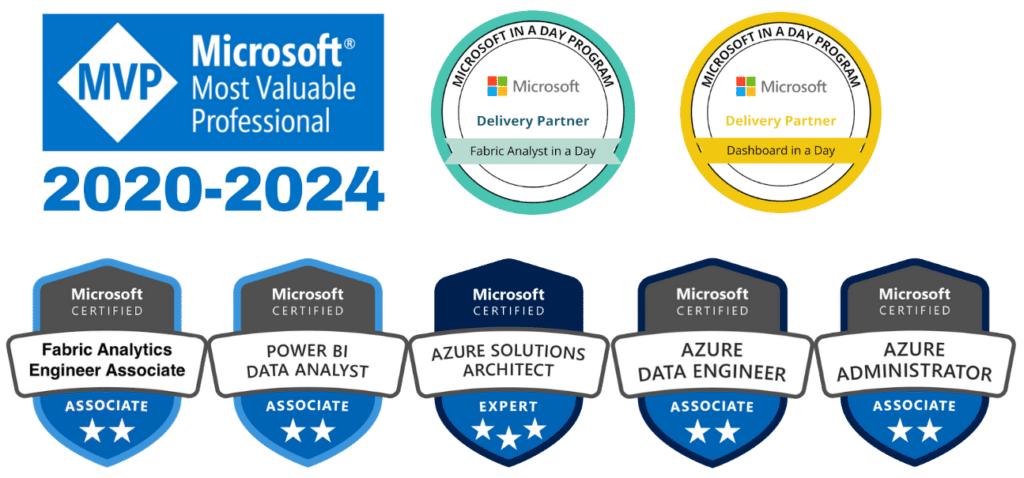In this session, we explored the exciting developments surrounding Microsoft Fabric and its integration with AI, focusing on practical steps for building and optimizing data platforms.
Key Developments in Microsoft Fabric
Microsoft Fabric’s general availability marks a significant advancement in data platforms. With its integration into various applications, including Power BI, Microsoft Fabric offers enhanced data management and analytics capabilities.
Key Features:
- Enhanced Integration: Seamlessly integrates with existing tools like Power BI, enabling advanced analytics and AI functionalities.
- New Power BI Features: Includes updated visuals, the button slicer, and the narrative visual with Copilot integration.
AI in Data Interaction
The role of AI in data platforms is rapidly evolving, with tools like Microsoft Copilot transforming how we interact with data.
AI-Powered Interaction:
- Natural Language Queries: Copilot allows users to ask complex questions and receive insights without navigating traditional dashboards.
- Data Preparation and Governance: Emphasizes the need for high-quality, well-governed data to ensure accurate AI-driven insights.
Building and Optimizing Data Models
Building effective data models is crucial for a successful data platform. Here are the steps involved:
- Define Business Processes: Align the data model with specific business processes and user needs.
- Create Fact and Dimension Tables: Organize data into fact and dimension tables for efficient analysis.
- Validate with Real Data: Use actual data to build and test models, ensuring feasibility and accuracy.
Prototyping vs. Source Data Validation
Balancing prototyping and source data validation is essential for a robust data platform.
Prototyping: Helps visualize the final product and gather early user feedback.
Source Data Validation: Ensures the data model aligns with real-world data, preventing discrepancies.
The Future of Data Visualizations
Despite AI advancements, traditional data visualizations remain relevant. Tools like Power BI continue to play a crucial role in data visualization, complemented by AI for simpler queries.
Key Points:
- Dashboards and Visualizations: Essential for complex data analysis and insights.
- Voice Interaction and Natural Language Processing: Future interactions may increasingly involve natural language queries.
Industry-Specific Data Models
Different industries have unique data requirements. Building industry-specific data models ensures that the platform meets these unique needs effectively.
Embracing New Tools and Technologies
Stay updated with the latest tools and technologies to enhance your data platform. Engage with new features in Power BI, explore the potential of Copilot, and experiment with integrating AI into your workflows.
Building effective data platforms involves leveraging cutting-edge technologies like Microsoft Fabric and AI while maintaining robust data governance and user-centric design. By staying informed and adaptable, data professionals can create powerful, future-ready data solutions.
